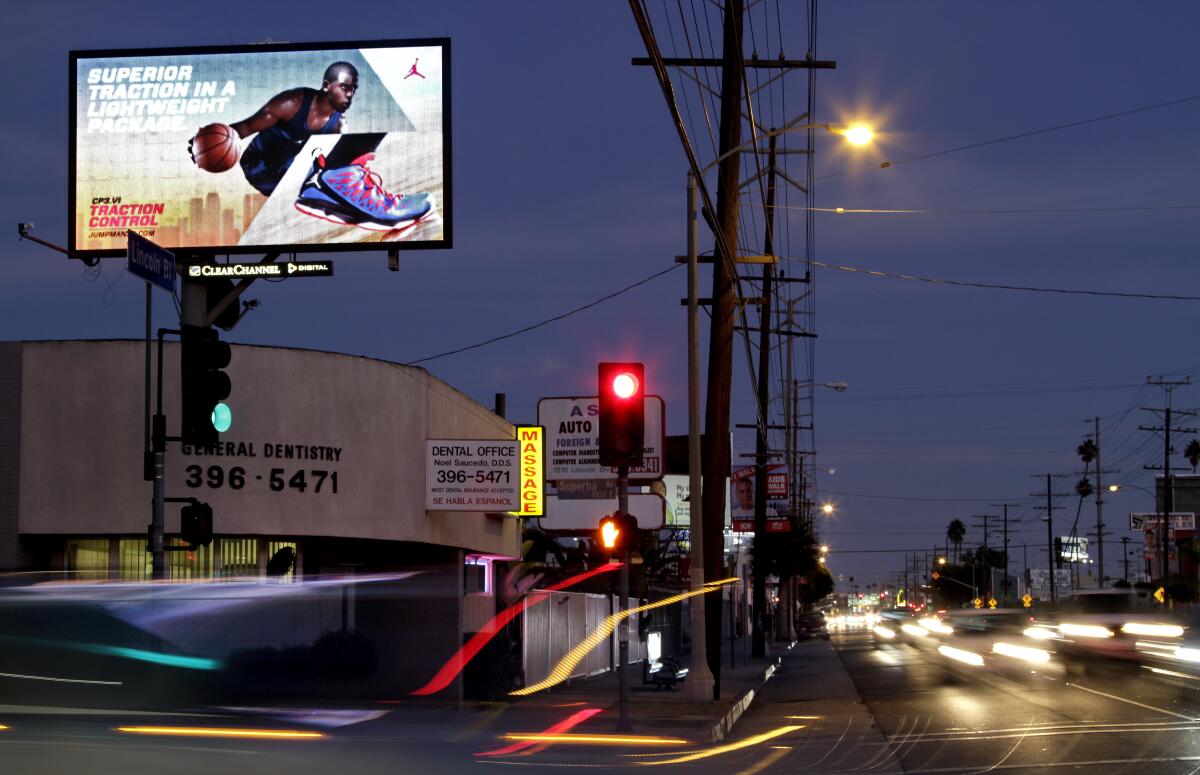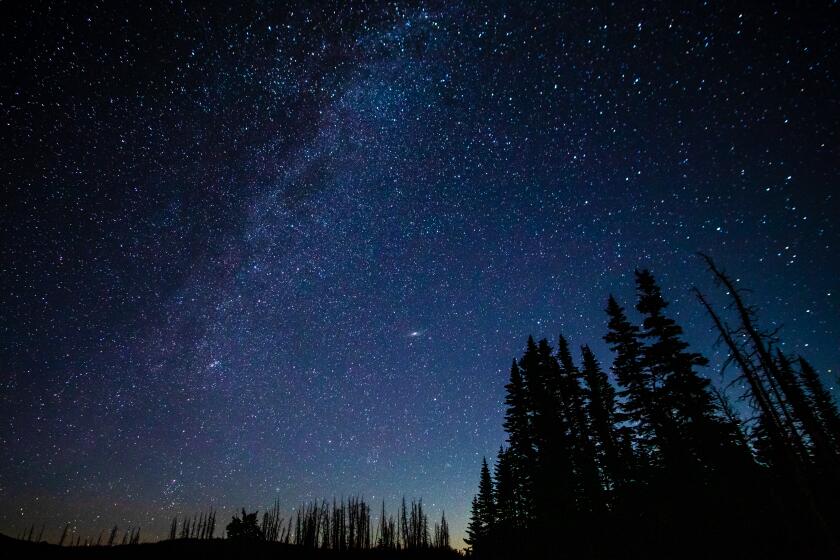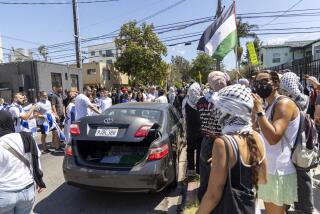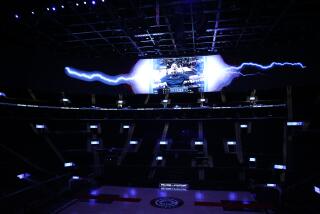Dozens of new digital billboards will light up Los Angeles

- Share via
Dozens of digital billboards are poised to go up above Los Angeles freeways and boulevards, marking the largest expansion in the city in nearly two decades.
Despite opposition from more than a dozen neighborhood groups, the City Council backed a plan on Friday to allow 71 digital billboards to be installed on property owned by the Los Angeles County Metropolitan Transportation Authority. Eleven council members approved the plan, with Traci Park, Nithya Raman and Katy Yaroslavsky voting no.
For the record:
12:12 p.m. Dec. 12, 2023An earlier version of this article identified Dustan Batton as the executive director of Scenic Los Angeles. The organization is Scenic America and Batton is executive director of its Los Angeles chapter. Also, the article misspelled the last name of Barbara Broide, co-president of the Coalition for a Beautiful Los Angeles, as Brodie.
Opponents argued that the influx of new signs, which would change images every eight seconds, would make L.A. streets even deadlier by distracting drivers, while adding a new source of blight to the cityscape.
“Our shared open space should not be for sale to commercial messaging,” said Barbara Broide, co-president of the Coalition for a Beautiful Los Angeles, an advocacy group that has opposes billboards. “They will cause unnecessary injury and death, pollute our visual environment and harm wildlife.”
The largest sign, at 1,200 square feet, will be alongside Union Station flashing at commuters along the 101 Freeway as they head downtown from East Los Angeles and Boyle Heights. The stark visual changes the illuminated signs will bring to the landscape could scare Hollywood filmmakers away, actor Stacey Travis told the City Council.
Concerned about light pollution? Here are steps you can take to preserve dark skies.
“For lucrative one-hour shows and features, L.A. rarely plays itself,” said Travis, SAG-AFTRA’s chair of government and public policy in Los Angeles. “They will simply move productions elsewhere, and [the city will] lose the jobs, revenue and tourism that brings in millions of millions of dollars.”
But city and county officials say the new billboards will be a lucrative source of revenue while offering traffic alerts. Seven out of every 8 images are expected to be ads.
Holly Rockwell, a Metro executive who is overseeing the program, said the billboards will provide “real-time transportation messaging” and money that can be used for transportation projects, while replacing “old and dilapidated static signs.”
During events like the Olympics, the billboards will be used to help direct traffic, she said.
The city and county will split the revenues, which were at one point projected to reach $300 million to $500 million over 20 years. As many as 300 nondigital billboards throughout the city could be removed through the program.
Metro’s plan now calls for 52 freeway-facing digital billboards, which can operate nearly 24 hours a day from 5 a.m. to 3 a.m. An additional 19 billboards along major boulevards will operate from 5 a.m. to midnight. Before the latter group of signs can go up, they must go through a city permitting process.
Since all are on Metro property, many are near rail stations or along large thoroughfares, for example Westchester at Century and Aviation boulevards near Los Angeles International Airport.
The fight over digital billboards harks back more than two decades, when the city blocked the widespread use of billboards that shone into people’s homes, confining them to certain areas. The legal battle between the city and outdoor advertising companies played out in court for years. Since then, the city has restricted digital signs to special districts in commercial areas.
Most digital billboards in the city have been concentrated downtown. Friday’s vote allows them in many more neighborhoods across L.A.
Since the vote was not unanimous, the billboard plan will requires a second vote next week. Groups such as Scenic America, which has fought the proliferation of billboards, still hope to thwart the plan.
“There has been zero transparency on the financial aspects of this. When we did our own analysis, it looks horrible for the city and Metro,” said Dustan Batton, executive director of Scenic America’s Los Angeles chapter. He said thousands of his members oppose the plan, and he hopes that their pressure will convince some City Council members to change their minds.
The plan originally included 93 billboards but was watered down as it wound its way through city committees, with several council members opposing billboards in their districts.
Foes of Metro’s plan say the proposed digital signs — many of them 48 feet wide — will distract drivers, making the city’s streets even more perilous.
Raman, who doesn’t have any billboards in her district, said she opposed the plan because of the hours of operation and concerns that billboards could be too close to housing. She said there has not been enough research into the effects of the billboards on traffic safety.
Times staff writer David Zahniser contributed to this report.
More to Read
Sign up for Essential California
The most important California stories and recommendations in your inbox every morning.
You may occasionally receive promotional content from the Los Angeles Times.













